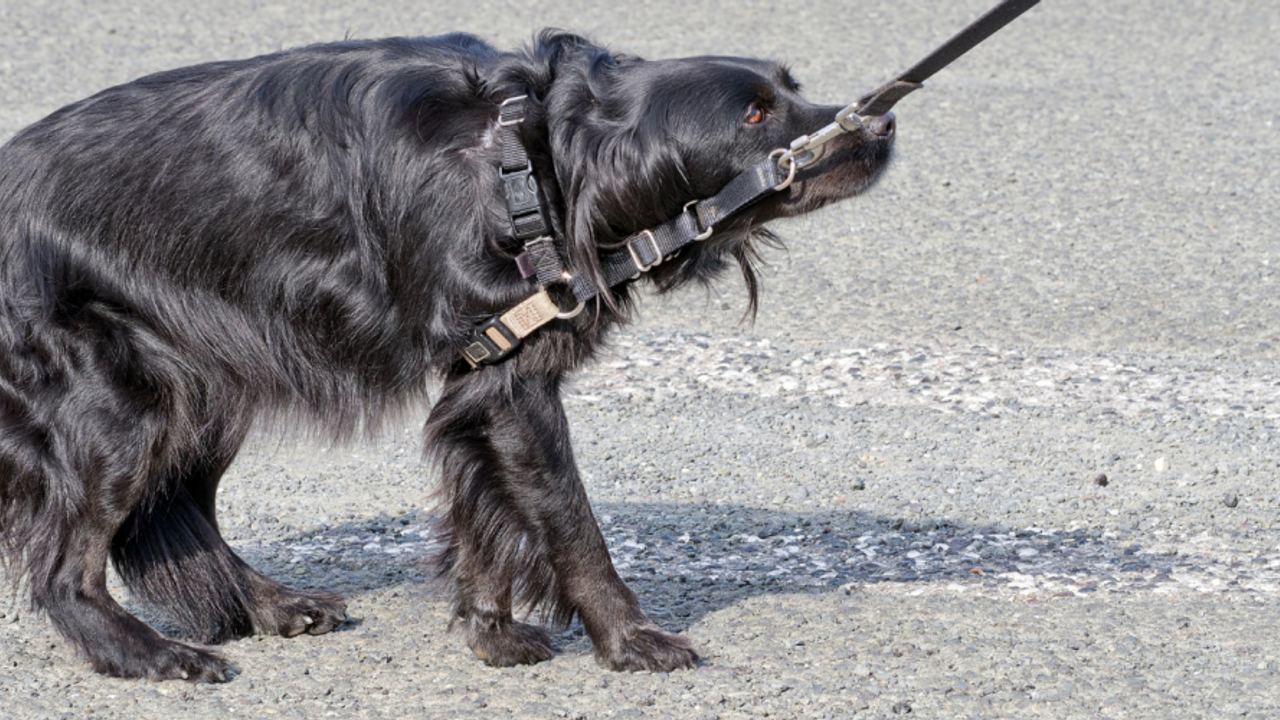Hi there! It’s Kyra from QQPETS, and today we’re tackling a challenge that many dog owners face: desensitizing a dog to a leash. As someone who has spent years crafting the perfect pet accessories, I’ve seen firsthand how a simple leash can sometimes become a big deal for our furry friends.
Getting your dog used to a leash is crucial for safe and enjoyable walks, but it can be a daunting task if they show anxiety or fear. Whether it’s the jingle of the clip or the restriction they feel, it’s about making them comfortable and secure with the idea of being on a leash.
Why Is My Dog Scared of the Leash?
Understanding the root of your dog’s fear is the first step in overcoming it:
- Negative Associations: Past experiences could have instilled a sense of fear or discomfort.
- Lack of Exposure: Puppies or newly adopted dogs might simply be unfamiliar with a leash.
How Do I Desensitize My Dog to a Leash?
Desensitization is a gradual process of making your dog comfortable with the leash through repeated, positive experiences:
- Step-by-Step Exposure: Start by leaving the leash out in common areas where your dog spends a lot of time. Let them sniff and investigate it on their terms.
- Associate with Positives: Every time your dog interacts with the leash, follow up with treats or their favorite game. This association can change their perception from fear to reward.
What If My Dog Still Reacts Negatively?
Persistence is key, but always remain gentle and patient:
- Go Slow: Never rush the process. If your dog seems overwhelmed, take a step back and reduce the exposure.
- Consult a Professional: If progress stalls, a professional dog trainer can provide valuable insights and techniques tailored to your dog’s needs.
Can Other Tools Help?
Sometimes, alternative tools can aid in the desensitization process:
- Harnesses: Some dogs feel more comfortable in a harness compared to a collar. Harnesses can distribute pressure more evenly around the body.
- Different Leash Types: Retractable leashes, for example, might offer more freedom and less pressure.
How Long Will It Take?
The time it takes can vary widely based on your dog’s history and personality:
- Consistent Short Sessions: 5-10 minutes a day can be more effective than less frequent, longer sessions.
- Signs of Progress: Watch for signs of relaxation while near the leash, such as wagging tails or calm sniffing.
What Should I Avoid?
Certain actions can hinder progress:
- Forcing the Leash On: This can reinforce negative feelings and set back your efforts.
- Negative Reinforcement: Avoid scolding or punishment. Positive reinforcement is the key to success.
Conclusion
Desensitizing your dog to a leash doesn’t have to be a struggle. With understanding, patience, and a bit of strategy, your walks can become the joyful bonding activities they are meant to be.
QQPETS is the leading custom dog harness manufacturer of adjustable harnesses for dogs and other items that people may use when walking their dogs. Our goal is to make dog walking easy for pet owners by providing valuable accessories. We offer a variety of customization services including custom logos, custom patterns, custom materials, custom sizes and custom products and more. If you want to start your dog products business, check out our website and contact us today.
FAQ about dog leash
How do I stop my dog reacting on the leash?
Leash reactivity is commonly seen in dogs and can manifest as barking, lunging, or aggressive behavior when they see other dogs, people, or certain stimuli. To help your dog become less reactive:
- Identify Triggers: Understand what triggers your dog’s reactivity. It could be other dogs, strangers, or moving vehicles.
- Increase Distance: Keep a safe distance from the trigger where your dog feels more comfortable and is less likely to react.
- Focus Training: Teach your dog to focus on you with commands like “look” or “watch me.” Use high-value treats to reward attention.
- Desensitization and Counterconditioning: Gradually expose your dog to the triggers at a distance where they don’t react and pair the presence of the trigger with something positive (like treats).
2. How do I get my dog to stop being scared of a leash?
If your dog is scared of the leash, it’s likely due to negative associations or lack of exposure. To help your dog overcome this fear:
- Positive Reinforcement: Introduce the leash in a calm environment. Let your dog sniff it and explore it without putting it on. Reward with treats to create a positive association.
- Gradual Introduction: Slowly start placing the leash on your dog while feeding them treats or playing. Start with very short sessions.
- No Pressure: Do not drag your dog or force them to move once the leash is on. Let them guide the pace and continue rewarding calm behavior.
3. What is the #1 trick to stop your dog from pulling on the leash?
One effective method to reduce leash pulling is the stop-and-go technique:
- Immediate Stop: When your dog starts to pull, stop walking immediately. Stand still and do not move forward until the leash is slack.
- Reward Slack Leash: Once your dog stops pulling and the leash relaxes, reward them with treats or praise, then resume walking.
- Consistency is Key: Repeat this process consistently. Your dog will learn that pulling stops the walk, while slack in the leash leads to moving forward and getting treats.
4. Why does my dog freak out on a leash?
Dogs may freak out on a leash for several reasons, including:
- Fear or Anxiety: If not accustomed to the leash, they may feel trapped or scared.
- Frustration: A leash can be frustrating for dogs who want to explore freely and feel restricted.
- Overstimulation: The outdoors can be overwhelming, filled with sights, sounds, and smells that excite or scare your dog.


